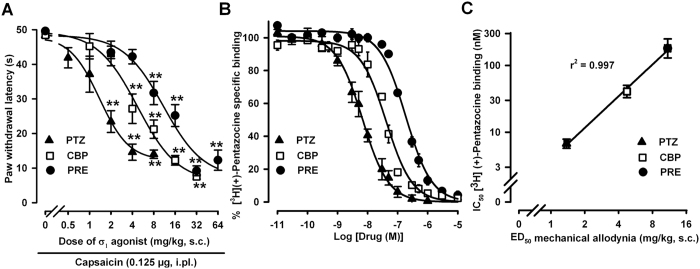Figure 3. Comparison of the effects of σ1 agonists on capsaicin-induced secondary mechanical allodynia in wild-type mice, and affinity of these σ1 agonists for σ1 receptors labeled with [3H](+)-pentazocine.
(A) Mice were subcutaneously (s.c.) injected with PRE-084 (PRE), (+)-pentazocine (PTZ), carbetapentane (CBP) or their solvent (saline, dose 0) 30 min before the intraplantar (i.pl.) administration of capsaicin (0.125 μg). The results show the latency to paw withdrawal in response to a punctate mechanical stimulus (0.5 g force) applied 15 min after the i.pl. administration of capsaicin. Animals were always stimulated in the injected paw. Each point and vertical line represents the mean ± SEM of the values obtained in 8–10 animals. Statistically significant differences between the values obtained in solvent-treated (dose 0) and drug-treated groups: **p < 0.01 (one-way ANOVA followed by Bonferroni test). (B) [3H](+)-pentazocine (5 nM) was incubated with 0.8 mg/mL brain membrane protein (P2 fraction) at 30 °C, pH 8, for 240 min and increasing concentrations of PTZ, CBP or PRE. Each point and vertical line represents the average of three experiments done in triplicate. (C) Correlation between the ED50 (dose of drug that produced half of the maximal decrease in paw withdrawal latency) and the IC50 (concentration of unlabeled drug that inhibited 50% of [3H](+)-pentazocine-specific binding) of the σ1 agonists tested.

